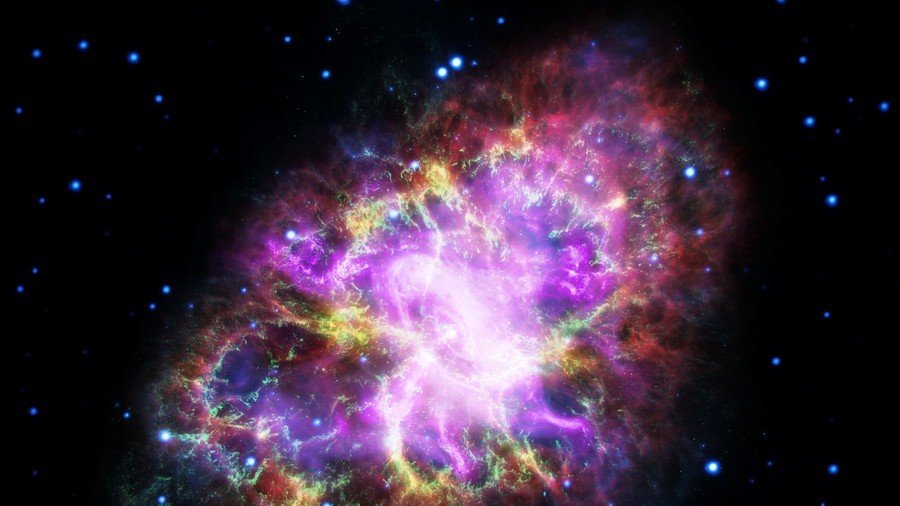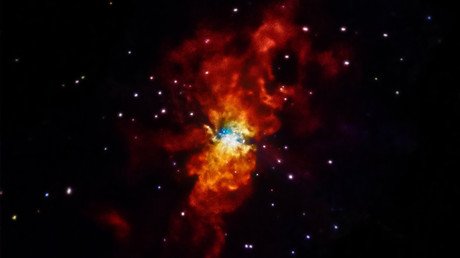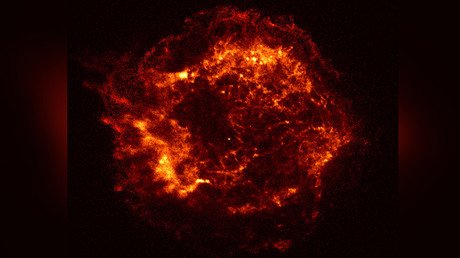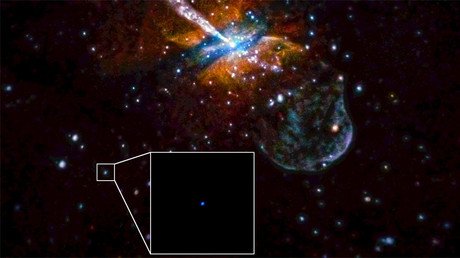5,000yo stone carving in Himalayas may be oldest sky chart & depiction of supernova

Stone carvings discovered in the Himalayan territory of Kashmir may represent the first ever depiction of a dying star and the oldest sky chart in human history, according to Indian scientists’ analysis of the ancient artifact.
The carvings, dating back to between 2,100 and 4,100 BC, were discovered in the 1960s in the Burzahama region in India’s Kashmir. It is believed they depict a hunting scene, in which two tribesmen armed with a bow and spear chase a bull.
But what attracted the attention of the scientists was the fact that there were two suns present in the sky in the carving. Refusing to believe that it was just a mistake or an exaggeration by the ancient artists, Indian astrophysicist, Mayank Vahia, and his team at Tata Institute of Fundamental Research in Mumbai have introduced a new theory explaining the image.
Astrophysicist Mayank Vahia & @TIFRScience colleagues believe a rock painting from 3600 BC. found in the Kashmir region is the oldest record of a supernova and likely the oldest sky chart ever drawn. https://t.co/2a2UoAlbyC#MondayMotivation#SuperNovapic.twitter.com/DlccrAUSrB
— Cynthia Green (@HistThruModEyes) January 8, 2018
“Our first argument was, there cannot be two suns. We thought it must have been an object that appeared and attracted the attention of the artists,” Vahia said, according to the Guardian. In a paper for the Indian Journal of History of Science, the scientist suggested that the second celestial body in the carving may actually be a supernova, a massive explosion that concludes the lifecycle of a star.
Using the data gathered by the astronomers, Vahia managed to track down what he believes was the supernova depicted in the cravings. According to the scientist, supernova HB9 was bright enough to be seen from Earth sometime around 3,600 BC.
Further comparison of the HB9’s position and the locations of surrounding stars with the images in the carvings, led the Indian researchers to believe that the figures aren’t actually hunters, but star constellations. “The whole hunting scene ... fits quite well into the pattern of stars in the sky,” Vahia wrote in the paper.
“The image of one of the hunters coincides with the Orion; the central stag is same as the Taurus. The hunter on the right may have been formed from stars of Cetus and other animal on the right may be Andromeda and Pegasus. The long, curved line in the carving, traditionally interpreted as spear, may well be an arc of bright stars,” he said.
If this conclusion is correct than the Kashmir carvings are also the oldest sky chart ever discovered. Vahia’s research was published back in 2013, but it made headlines in India only this December after being picked up by a popular podcast.















